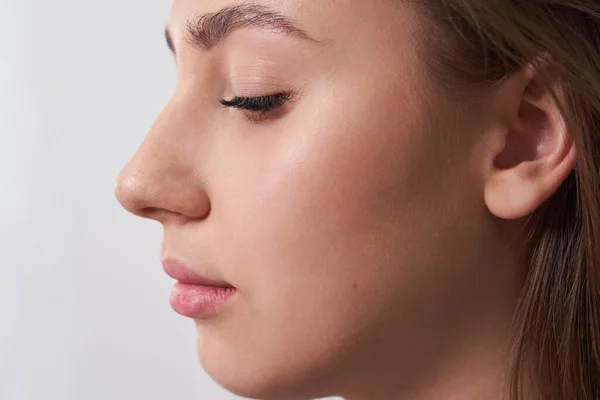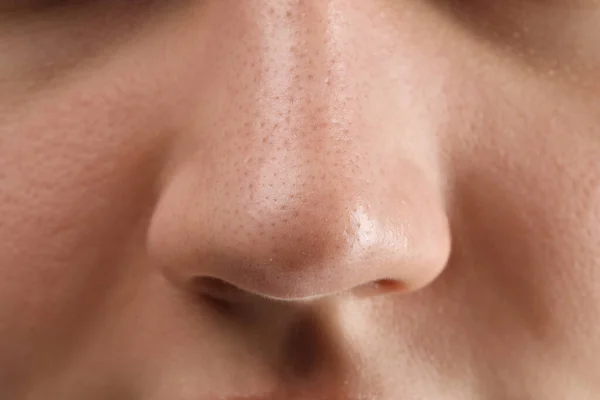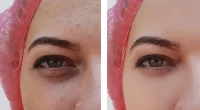Discover the “Navigating Post-Rhinoplasty Discontent” Undergoing a rhinoplasty is a profound decision, driven by a desire for aesthetic improvement. However, the journey doesn’t end with the surgery itself; navigating post-rhinoplasty discontent is a nuanced aspect that demands attention. In this comprehensive guide, we delve into the intricacies of the emotional landscape post-rhinoplasty, offering insights, coping mechanisms, and a roadmap to embracing the transformation.

Understanding Post-Rhinoplasty Discontent
It’s crucial to acknowledge that post-rhinoplasty discontent is a valid and relatively common phenomenon. Here are some factors that can contribute to it:
- Unrealistic expectations: Before surgery, it’s essential to have realistic expectations about the outcomes of rhinoplasty. It’s not magic, and your surgeon should manage your expectations by explaining the limitations of the procedure.
- Focus on imperfections: Our brains tend to hyperfocus on flaws, and this can be amplified after surgery. Minor irregularities that might have gone unnoticed before can become magnified in your perception.
- Psychological factors: Pre-existing anxiety, depression, or perfectionism can exacerbate feelings of discontent after rhinoplasty.
Coping with Post-Rhinoplasty Discontent
If you’re struggling with post-rhinoplasty discontent, here are some strategies that can help you cope:
- Give it time: Healing after rhinoplasty is a gradual process. Allow yourself time to adjust to your new nose. The swelling can significantly distort your appearance in the initial weeks, and it can take up to a year for the final results to fully emerge.
- Seek support: Talk to your surgeon, a therapist, or support groups for rhinoplasty patients. Sharing your experiences and concerns with others who understand what you’re going through can be incredibly helpful.
- Focus on the positives: Remind yourself of the reasons you chose to have rhinoplasty. Did it improve your breathing? Boost your confidence? Focus on the positive aspects of your new nose and the overall improvement in your well-being.
- Practice self-compassion: Be kind to yourself. Recognize that feeling discontent is normal and doesn’t reflect your worth as a person.
- Seek professional help: If your discontent is severe or interferes with your daily life, consider seeking professional help from a therapist or counselor who specializes in post-surgical adjustments.
The Emotional Rollercoaster
The aftermath of a rhinoplasty often presents a whirlwind of emotions. It’s essential to acknowledge that post-rhinoplasty discontent is a common phenomenon, rooted in various factors:
- Expectation vs. Reality:
The disjunction between the envisioned outcome and the reality post-surgery can be unsettling. Managing expectations is an ongoing process, and understanding the nuances of the healing journey is crucial.
- Physical and Psychological Adjustment:
The physical changes are accompanied by a psychological adjustment period. Accepting the altered image in the mirror requires time and self-compassion.
- External Influence:
Societal standards of beauty can exert significant pressure, contributing to post-rhinoplasty discontent. Recognizing and challenging these external influences is an integral part of the healing process.
Embracing the Healing Process
Immediate Postoperative Period:
The initial days after rhinoplasty are marked by swelling, bandages, and a sense of novelty. It’s imperative to understand that the immediate postoperative appearance is not indicative of the final result. Navigating post-rhinoplasty discontent begins with patience.
Swelling and Bruising:
Swelling and bruising are inherent aspects of the rhinoplasty recovery process. Embrace this phase as part of the journey, knowing that it is transient. Arnica supplements and cold compresses can expedite the resolution of swelling.
Consultation with the Surgeon:
Maintaining open communication with your surgeon is paramount. They are a valuable resource in addressing concerns and providing realistic timelines for the visible results.
Coping Mechanisms for Post-Rhinoplasty Discontent
Mindfulness and Self-Reflection:
Incorporate mindfulness practices into your daily routine. Engage in self-reflection to explore the motivations behind undergoing rhinoplasty and cultivate a positive mindset.
Support System:
Share your feelings with a trusted friend, family member, or mental health professional. Having a support system can alleviate the emotional burden and provide perspectives beyond the immediate postoperative phase.
Journaling:
Documenting your thoughts and emotions in a journal can be cathartic. Track your progress, celebrate small victories, and recognize the evolution of your feelings over time.
Addressing Unrealistic Expectations
Digital Distortion:
The prevalence of digitally altered images in media can create unrealistic beauty standards. Recognize that these images often deviate from reality and may contribute to post-rhinoplasty discontent.
Patient Education:
Surgeons play a crucial role in educating patients about realistic outcomes. Understanding the limitations of the procedure fosters a more informed and emotionally resilient mindset.
The Role of Time in Healing
Patience as a Virtue:
Rhinoplasty is a transformative process that unfolds gradually. Patience becomes a virtue in this context, as the final results may take several months to become apparent.
Tracking Progress:
Document changes in your appearance through photographs at regular intervals. This visual record serves as a tangible reminder of the progress made, fostering a positive outlook.
Professional Intervention for Emotional Well-being
Therapeutic Guidance:
Seeking therapy from a qualified mental health professional is a proactive step. Therapy provides a safe space to explore emotions, develop coping strategies, and work towards self-acceptance.
Body Dysmorphic Disorder Awareness:
In some cases, post-rhinoplasty discontent may be indicative of body dysmorphic disorder (BDD). Recognizing the signs and seeking professional help is crucial for effective intervention.
Redefining Beauty on Your Terms
Empowerment Through Self-Expression:
Consider the transformative journey as an opportunity for self-expression. Experiment with makeup, hairstyles, and fashion that align with your evolving sense of identity.
Community Engagement:
Connect with others who have undergone rhinoplasty or similar transformative experiences. Online communities and support groups provide a platform to share experiences and insights.
Conclusion
In conclusion, navigating post-rhinoplasty discontent is an integral part of the transformative journey. Understanding the emotional nuances, adopting coping mechanisms, and seeking professional support are crucial components of this process. Embrace the evolving self with patience, recognizing that beauty transcends societal standards. The comprehensive guide provided here serves as a roadmap for individuals navigating the intricate landscape of post-rhinoplasty emotions, empowering them to find solace and confidence in their unique journey.
Continue to check our website for more articles of this kind. And, please use our comment section as well, we would love to hear from you.
Last Updated on January 19, 2024 by 247 News Around The World






